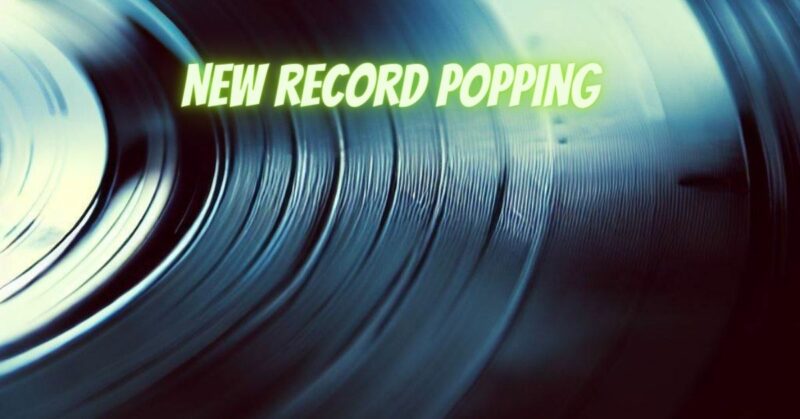The allure of unwrapping a brand-new vinyl record and immersing oneself in the timeless sound of analog music is a cherished experience for audiophiles. However, the discovery of popping and crackling sounds on a new record can sometimes dampen this excitement. This article explores the phenomenon of new record popping, its potential causes, and steps you can take to minimize or address this issue for a more enjoyable listening experience.
The Intricate Dance of Vinyl and Sound:
Vinyl’s Unique Character: Vinyl records are known for their warm analog sound and tactile charm, a result of the grooves etched onto the surface. However, these grooves, while intricate carriers of sound, can also be susceptible to various imperfections that translate into audible artifacts.
Causes of New Record Popping:
- Pressing Imperfections:
- During the manufacturing process, small imperfections such as tiny air bubbles or debris can become trapped in the vinyl, leading to audible pops when the stylus encounters these irregularities.
- Static Electricity:
- Static electricity can accumulate on the record’s surface during handling, attracting dust and particles that can cause popping sounds as the stylus moves through the grooves.
- Mold Release Residue:
- Sometimes, remnants of mold release agents used in the pressing process can remain on the record’s surface, creating popping and crackling sounds during playback.
- Packaging and Storage:
- Improper packaging or storage conditions can result in records coming into contact with packaging materials, leaving behind particles that cause pops during playback.
- Environmental Factors:
- Humidity changes and temperature fluctuations can cause the vinyl to expand and contract, potentially exacerbating existing imperfections and leading to audible pops.
Minimizing New Record Popping:
- Proper Handling:
- Handle new records with clean hands and avoid touching the playing surface. Dust and contaminants can contribute to popping sounds.
- Static Control:
- Use an antistatic brush or gun to remove static electricity from the record’s surface before playing to minimize the attraction of dust and particles.
- Cleaning:
- Give your new records a gentle cleaning with a dedicated record cleaning solution and a microfiber brush to remove any residue and particles.
- Inspection:
- Examine the record under good lighting to identify any visible imperfections before playing. This can help you anticipate potential popping points.
- Environmental Considerations:
- Store your records in a controlled environment with stable temperature and humidity to reduce the likelihood of expansion and contraction-related popping.
The occurrence of popping sounds on new records is not uncommon, and it’s often a result of the intricate interplay between vinyl’s analog nature and the manufacturing process. By understanding the potential causes and taking proactive steps to minimize or address new record popping, you can ensure a smoother and more enjoyable vinyl listening experience. Remember that each vinyl record carries a unique sonic journey, imperfections and all, contributing to the rich tapestry of analog sound that captivates audiophiles worldwide.


